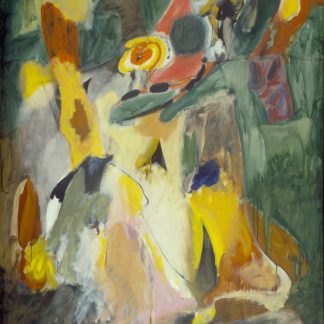Arshile Gorky was an Armenian-American painter who was born in 1904 in the city of Van in present-day Turkey. He immigrated to the United States in 1920, and began his artistic training in New York City. Gorky’s early works were influenced by the work of the European Surrealists, but he quickly developed his own unique style that blended elements of Surrealism, Cubism, and Abstract Expressionism.
Gorky’s paintings are known for their organic shapes and forms, and their vivid, expressive use of color. He was fascinated by the natural world, and many of his works depict plants, landscapes, and other natural phenomena. Gorky was also interested in the human form, and many of his paintings incorporate biomorphic shapes that suggest the body or other organic forms.
Some of Gorky’s most famous works include “The Liver is the Cock’s Comb,” “The Garden in Sochi,” and “The Artist and His Mother.” Gorky’s works are celebrated for their sense of dynamism and energy, as well as their ability to evoke a sense of deep emotion and introspection. Despite facing personal and professional setbacks throughout his career, Gorky’s legacy has endured, and he is now considered one of the most important and influential painters of the 20th century.
Showing all 2 results
-

The Liver is the Cock’s Comb
Gorky, Arshile From $28.69 Select options This product has multiple variants. The options may be chosen on the product page -

Waterfall
Gorky, Arshile From $28.69 Select options This product has multiple variants. The options may be chosen on the product page
Showing all 2 results


